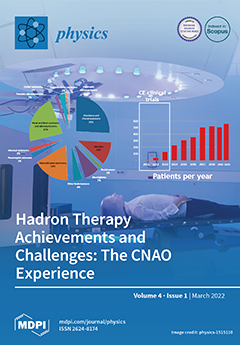In this paper, a theory of force-free magnetic field useful for explaining the formation of convex closed sets, bounded by a magnetic separatrix in the plasma, is developed. This question is not new and has been addressed by many authors. Force-free magnetic fields
[...] Read more.
In this paper, a theory of force-free magnetic field useful for explaining the formation of convex closed sets, bounded by a magnetic separatrix in the plasma, is developed. This question is not new and has been addressed by many authors. Force-free magnetic fields appear in many laboratory and astrophysical plasmas. These fields are defined by the solution of the problem
with some field conditions
on the boundary
of the plasma region. In many physical situations, it has been noticed that
is not constant but may vary in the domain
giving rise to many different interesting physical situations. We set
with
being the poloidal magnetic flux function. Then, an analytic method, based on a first-order expansion of
with respect to a small parameter
, is developed. The Grad–Shafranov equation for
is solved by expanding the solution in the eigenfunctions of the zero-order operator. An analytic expression for the solution is obtained deriving results on the transition through resonances, the amplification with respect to the gun inflow. Thus, the formation of spheromaks or protosphera structure of the plasma is determined in the case of nonconstant
.
Full article





